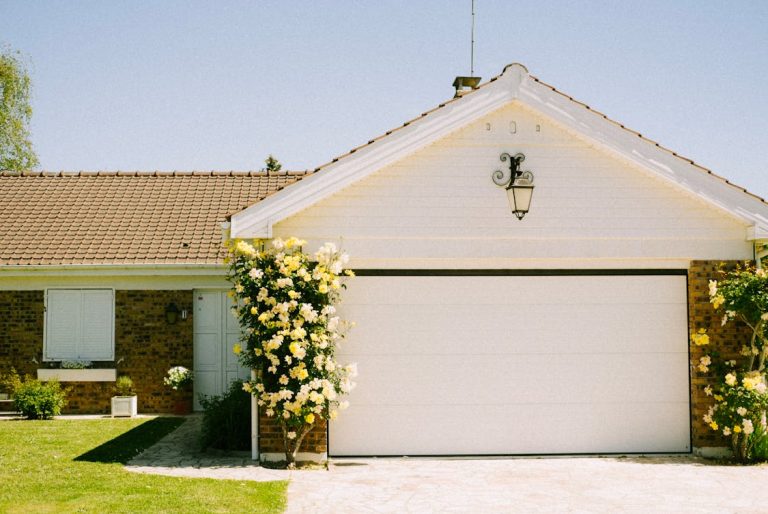Owning a home in the United States has always been a cornerstone of prosperity and security, a tangible reflection of achieving the American dream. Yet, this aspiration is slipping away for many, as home prices climb steadily upward. Middle-income earners, young adults looking to stake a claim in the world, and those attempting to purchase …
Why Are House Prices So High? Unpacking the Surge in Real Estate Values

Owning a home in the United States has always been a cornerstone of prosperity and security, a tangible reflection of achieving the American dream. Yet, this aspiration is slipping away for many, as home prices climb steadily upward.
Middle-income earners, young adults looking to stake a claim in the world, and those attempting to purchase their first property are finding themselves priced out of the market, as homes become less affordable than ever before. It’s a sobering reality that echoes concerns first voiced decades ago when the cost of houses reached what was then considered peak prices.
The trajectory of housing costs has been upward for years, shattering records along the way.
In the latter part of the 1970s, the alarm was sounded when the median home price surged, signaling a potential crisis in affordability. Little did they know, those numbers would pale in comparison to the figures seen over 45 years later, where the median price has multiplied many times over.
This steep rise prompts an essential question that prospective buyers grapple with today: just why are home values escalating at such a relentless pace?
Historical Housing Prices
- 2020 onset: Home costs began a significant upsurge.
- 2022 peak: The apex of housing prices occurred.
- Post-peak: A sharp downturn in pricing followed.
- Current trend: Prices are now ascending at a more gradual rate, moving away from the previously steep growth pattern.
Factors Influencing Rising Home Prices
The landscape of home ownership is evolving, with several elements fueling the surge in property value.
Investors are on the hunt for older homes in need of renovation, often outbidding families.
Consider that the typical American house has seen over four decades since its construction. Investors with deep pockets refurbish these homes, not to resell, but to transform them into rental properties, which diminishes the pool of available homes for would-be homeowners.
Meanwhile, older adults are opting to stay in their spacious homes.
The quest for a family-sized residence is on, as many seek houses with three bedrooms or more. Yet, a considerable portion of such homes, despite having ample space, are occupied by one or two individuals, predominantly aged 62 and above.
Fees linked to purchasing a home further push ownership out of reach for some buyers.
When closing on a home, buyers encounter a variety of fees. These may include initial loan-related charges, payment for running credit checks, and a list of others. Recent reports have highlighted a significant uptick in these costs, which on average neared $6,000, affecting affordability.
To put it into perspective, a segment of homebuyers with lower incomes saw their closing costs equal or surpass their down payment contributions, strikingly so for more than one in ten such buyers.
Key Points to Note:
- Investor Activity: They’re buying, renovating, and renting, reducing available homes for purchase.
- Senior Homeowners: Not downsizing, thus limiting family-friendly home availability.
- Fees: Mounting costs at closing are becoming an increasing burden for homebuyers.
Impact of the Pandemic on Housing Costs
The recent surge in housing prices wasn’t just a result of usual market trends. The pandemic itself had a hand to play.
People found themselves within their home walls more than ever before, altering their preferences and needs for living space. With borrowing costs hitting record lows due to slashed interest rates, securing a mortgage became more affordable for many.
Additionally, during this time, consumers generally reduced their spending, partly due to lockdown measures, while also receiving government stimulus funds, leading to an increase in savings for some, thereby swelling the funds they had on hand for home purchases.
On the flip side, the housing market faced its own pandemic-induced challenges.
Supply chain disruptions coupled with a spike in construction wages pushed the costs of homebuilding upwards. These factors combined acted as a catalyst, driving house prices to new heights in many areas.
- More Time at Home: Changing housing needs during the pandemic.
- Lower Borrowing Costs: Effect of decreased interest rates on mortgages.
- Financial Cushion: Increased savings and stimulus funds contributing to down payment capabilities.
- Rising Building Costs: How supply chain issues and wage hikes influenced home prices.
Housing Market Dynamics: Comparing Different Growth Periods
Reflecting on the recent patterns in the U.S. housing market, one can identify two significant periods when home prices soared.
The early 21st century experienced a surge, stretching from approximately 2000 to 2006, that set the stage for the subsequent economic downturn and a wave of foreclosures.
A later escalation in home values can be traced to the onset of the COVID-19 pandemic, marked by an annual growth in home prices outpacing the rates seen in the earlier boom.
Diving into what sets these two periods apart, key factors emerge:
- During the most recent surge, the construction of single-family homes hasn’t kept pace with the previous boom.
- In contrast, there has been a remarkable surge in new households forming, eclipsing the growth rates before the Great Recession.
Between 2000 and 2004, the household growth rate was a stable 3% every three years. However, that rate dwindled during the latter half of the decade and dipped further during the economic turbulence following.
Fast forward to 2020–2022, the housing market witnessed the steepest incline in household formation seen in recent times.
Perhaps Most Importantly, the Mortgage Rate Lock-In Impact
When considering the currents state of the housing market, one can’t overlook the significant influence of the mortgage rate lock-in.
As of January 2024, almost half of the homeowners with mortgages supported by Fannie Mae or Freddie Mac benefit from notably low-interest rates of 3.5% or less.
On the other hand, the average rate for fresh 30-year fixed mortgages hovered around 6.6%.
The disparity between existing low interest rates and the higher rates for new mortgages is creating a reluctance among homeowners to sell.
After all, relinquishing a mortgage with a low rate for a new, more expensive one hardly seems appealing.
Consequently, this has led to a noticeable freeze in the market, as homes are predominantly sold only by those who must relocate due to necessity rather than choice.
Recent studies illustrate how serious this effect is.
Each one-percent hike in interest rates above a homeowner’s current rate can slash the chances of that home hitting the market by an astounding 18% or more.
This reluctancy to sell contributed to a steep 57% drop in home sales with fixed-rate mortgages by the end of 2023’s last quarter.
This phenomenon doesn’t just stall sales; it also bumps up property prices.
The reduction in supply and available houses helped shoot up home prices by 5.7% according to a study by the Federal Housing Finance Agency.
Key Takeaways:
- 47.9% of homeowners with a Fannie Mae or Freddie Mac mortgage enjoy rates of 3.5% or less.
- The reluctance to let go of low-rate mortgages is constraining supply in the housing market.
- This trend is escalating home prices, as evidenced by the 5.7% increase.
Factors Influencing a Deceleration in Home Price Growth
To moderate the uptick in housing costs, several elements are expected to come into play:
Mortgage Rates: Homeowners are processing the reality that low mortgage rates are history. Though important, the mortgage is just one slice of the homeownership pie.
Additional Expenses: Costs such as property taxes, insurance, and utilities also dictate the overall expense of owning a home; this realization may affect market dynamics.
Temporal Element: Patience may be key as market participants adjust expectations and strategies over time, possibly cooling off demand.
Buying a House When Prices Are High
Historically, house prices in the United States tend to increase over time, which benefits homeowners as they gain equity.
During the real estate surge from mid-2020 to late 2022, sellers often received more than their asking price, leaving many quite content with the transactions.
For those considering whether to purchase a property now, there’s some solace in knowing that house prices have adjusted closer to average levels since 2023, potentially leading to more reasonable pricing.
Yet, house pricing fluctuates significantly by location, so buyers should weigh the regional housing costs before proceeding.
Market stabilization offers a more equitable climate for those looking to buy, without the intensity of the past bidding wars.










Comments
Kevin T.
It’s crazy how much prices went up because of the pandemic. Honestly wasn’t expecting that kind of impact.
Sara Jennings
Yeah, it’s wild. Supply chain issues and low mortgage rates really pushed things to another level.
Mark B.
idk, prices were already high before covid. seems like just another excuse to hike em up.